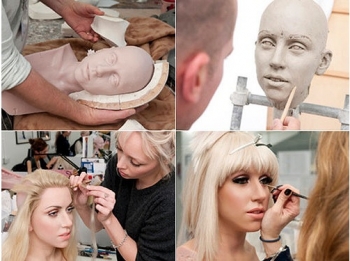Kinds of Molds and Their Uses

First, let us define what a mold is. A mold is a negative impression of a model’s structure. It is like a photographic negative image. The use of a mold is to capture exactly the details of a model.
The products of mold making or casting is all around us. Almost all industries rely on molds to produce their goods. Even your favorite snack, gelatin is produced in a mold. Food molds give a desired appearance to the gelatin.
Fossil museums use molds to recreate the impressions that dinosaurs left behind. Taxidermists use molds to recreate animals for display. Large construction companies also use molds to make pre-fabricated structures that can be laid out easily on their project sites. There are as many uses for molds as there are differing varieties of materials used.
Hollywood is one fine example of users of rubberized molds and castings for their special effects in movies. Rubberized molds are the most common and popular material because of its flexibility and wide use. They are also safe to use even when applied to the skin. And they are definitely environmentally friendly.
The most popular rubberized mold materials for casting are latex, alginate, silicone, polyurethane and polysulfide.
Latex is extracted from the rubber trees that are abundant in Southeast Asia. To prepare latex as a mold material, it is processed with a combination of ammonia and water. As a mold, it is often brushed to the model. Latex is generally inexpensive and is a strong mold material. It can also be reused. However, its curing time is longer making it time consuming.
Alginate is a mold material that is extracted from seaweed. Although known in the market as a waste mold since it can only be used once because of shrinkage. However, they are the best material to reproduce body parts including face and hands. Some alginate molds do not contain silica thus there are the safest types of alginate to use on the skin.
Silicone is the most flexible among the rubber mold making materials. It is a two-component system meaning it requires the silicone material combined with other materials as a catalyst. With its characteristics of good release properties, high temperature and chemical resistance, it is the best option for the production of casting resins.
Polyurethane has the most wide usage in a variety of applications mainly because of its lower cost. They are available in a wide range of hardness from gel-like substance to as hard as tire rubber.
Polysulfide is the favorite mold for bronze foundries for a long time. They have poor abrasion resistance and are odorous and they are not recommended for the casting of resins.
